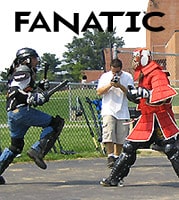This is way overdue, having been requested around Christmas, I think.
“Hi James, this is for "Beasts of Aryas". Could you write an article on functional longevity stretching for aging runts? Not just the motions, but also the concepts and health issue correction angles. Thanks!”
-Ivan
…
Number one is do not do anything fast. Exercise slowly and deliberately in a relaxed state.
Apply heat before exercise, like cuddling with a big old fat woman or taking a bath or shower.
Walking should be your primary exercise, engaged in before stretching.
Plyometrics [ballistic stretches] and static stretches can both tear old tendons. So try slow plyometrics and static stretches alternately.
I had a very hard time stretching out in my early thirties. I then borrowed Doctor Estwanick’s system and became more flexible within 6 months, post injury, in my mid thirties then I had ever been as a youth prior to injury.
This is static stretching for 30 seconds after the point relaxation is achieved, with no additional benefit after 30 seconds.
That one set can stretch you out 5%.
The second set stretches you 10%.
The third set 20%
The fourth set 40%.
The fifth set 80%.
A sixth set offers no additional benefit.
Before stretching light exercise for 20 minutes is best, something with no weights, like walking or waist rolls, or dancing.
Then try a static stretch to see where you are and how you feel. Then repeat this stretch four more times, holding for 30 seconds, trying to get slightly more, but not much more, range of motion on each.
The main stretches are hamstring and calf stretches, which can be done standing halfway through or after your walk, never cold.
Body weight exercises and barbell weights become more dangerous as you age. Try some light dumbbells for a lot of reps to strengthen your arms and use waist rolls and side bends on your core.
Once you are stretched out, after let’s say a year, begin replacing those static stretches with slow plyos, that is to say an easy bounce stretch. I mostly keep my hamstrings loose by doing standing plyo toe touches, which I can even do on the train.
With toe touches, which is your most important stretch, focus on touching your knees with your forehead, rather than your toes with your fingers. You can assist by grabbing your legs and pulling in gently.
If you are really tight, take a hot bath, then lay on the bed and use a towel to lasso one foot with both hands and then as a lever to pull that leg back, straight from the hip, while the other knee is bent and the flat of the foot is on the prone surface.
Overall, the best way to stay flexible is:
-1. Avoid repetitive tasks, like using a tool, running a register, bagging groceries, driving, etc.
-2. Do light low intensity exercises like walking, dancing, shadow boxing, making love to that big fat woman, waist rolls, wrist rolls, ankle rolls, shoulder rolls, in smaller circles to begin and end each set.
-3. Avoid asymetrical exercises. When shoveling, I recently got bad flexor tendon spasms in my right hand because I spent 18 hours a week using the right hand as the rear hand and absorbing the shock of hitting rocks. My hands wake me up each morning they hurt so bad. But I have been able to use massage and exercise to keep working 4 hours per day. So shovel, chop, turn, etc., from both sides.
-4. Once you have a muscle spasm, do not push the stretch of that muscle. Rather, rub that knot out with the other hand, or use a lacrosse ball on the lower back, or have that big fat woman rub it for you. Then, after the massage, do slow, easy plyos for that muscle.
Ivan, I am far from an expert on this stuff. But, despite losing 60% of my strength over the past year [going down from 17 to 8 pushups] I am still managing to do labor for 20 hours a week, including the 12 six inch thick trees I took down with a hatchet this morning, and the 30 light 60 pound logs I hauled. If my weak-ass can keep hobbling along, you should have good prospects.
The most important thing is to avoid injury.
Do not go against a clock, a weight, a number of repetitions to be beat, etc. Do your exercises for health, not performance.
Perhaps use potassium and magnesium supplements [easy on the last one, its a laxative] to help combat muscle spasms.
Good luck.











